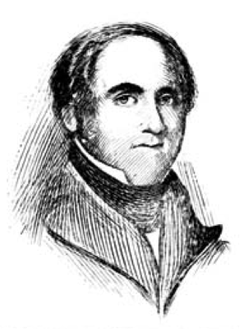Charles Morris | |
|---|---|
 Charles Morris in Regency Era attire[1] | |
| Surveyor General | |
| In office 1748–1781 | |
| Monarch | George III |
| Succeeded by | Charles Morris (1731–1802) |
| Chief Justice of the Nova Scotia Supreme Court | |
| In office 1776–1778 | |
| Preceded by | Jonathan Belcher (jurist) |
| Succeeded by | Bryan Finucane |
| Personal details | |
| Born | 8 June 1711 Boston, Massachusetts |
| Died | 4 November 1781 (aged 70) Windsor, Nova Scotia |
| Relations | Charles Morris (1731–1802), son; Charles Morris (1759–1831), grandson |


Charles Morris (8 June 1711 – buried 4 November 1781) army officer, served on the Nova Scotia Council, Chief Justice of the Nova Scotia Supreme Court (1776–1778) and, the surveyor general for over 32 years, he created some of the first British maps of Canada's maritime region and designed the layout of Halifax, Lunenburg, Lawrencetown, and Liverpool.[3] In Halifax, he laid out both the present-day down town core and the Halifax Common.
- ^ This image is not contemporaneous. Given the era of the clothing, the clothing may be simply a mistake by the artist or the image is actually of Charles Morris III, who lived during the Regency Era.
- ^ "Charles Morris Plaque Unveiling". snapd Halifax - Community Events Media. Archived from the original on 6 March 2016.
- ^ Morris was preceded in his mapping by Nathaniel Blackmore's work of 1711 & 1712, published by Herman Moll, Geographer, of London. Morris may have been the first observer/surveyor to produce and publish his own maps of the region. Like Blackmore, Morris surveyed portions of the region and then combined his work with information from other mapmakers' maps to produce his larger regional maps.
